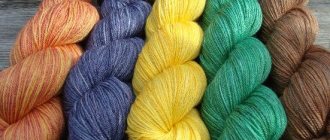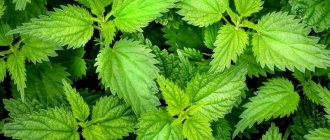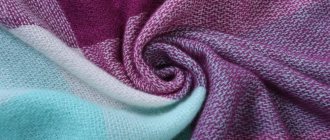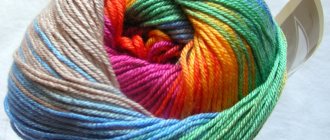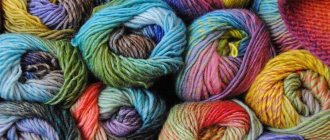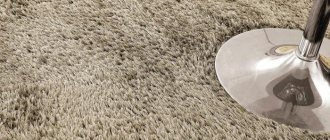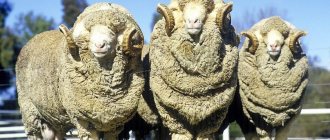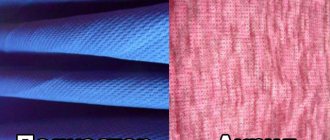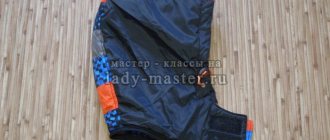Knitting enthusiasts have different opinions about acrylic yarn. Some people don’t like acrylic because of its unnatural origin and its tendency to form pellets on the surface of products. And others really like to work with acrylic yarn and wear things knitted from it. Adherents praise the material for its bright colors, ease of care and attractive appearance.
What it is?
Acrylic is a synthetic thread. Petroleum products are used for its production. Acrylic fiber is created through a process of complex chemical reactions under certain temperature influences.
In such a context, there is no point in going deeper into the description of the direct production process. It is much more interesting to understand what characteristics and properties this product has. Acrylic is usually called all polymer materials whose composition is based on methacrylic acid. But most often the word “acrylic” is found in the context of different types of yarn.
Acrylic fiber was first obtained by scientists in the mid-twentieth century in America. It is this country that is considered the birthplace of fibers of complex synthetic origin. The Americans began to master the new product, and soon the first variety appeared - the Orion material. Acrylic itself and this name originated in 1952.
Compound
The 100% acrylic yarn is produced through complex technical manipulations from hydrocyanic acid and acetylene isolated from natural gas. This is how 100% synthetic fibers are obtained. In production in different countries, the names of acrylic yarn differ: PAN, acrylan, camilon, ordon, dralon, kurtel and more.
Acrylic is also often called artificial wool due to the similarity of the properties of synthetic and wool fibers. In fact, the unnatural origin of acrylic does not mean that the material is full of disadvantages. It is worth finding out in more detail what the pros and cons of threads made from 100 percent synthetics and mixed yarn with its addition are.
All about acrylic yarn: what’s special about it and what to knit with it?
Despite the fact that acrylic is a fairly well-known material in knitting, not everyone knows reliably about its properties, and therefore there are often conflicting opinions about it. So, what is acrylic yarn, what are its advantages and disadvantages, care features and application possibilities, compatibility with other materials? Let's figure it out together.
The world market names acrylic in yarn differently, for example, the label may indicate PAN fiber, Krylor, Orlon, Redon, Nitron, Prelan.
Acrylic fibers are the result of complex chemical reactions in production - in other words, they are obtained synthetically. This leads to both a number of advantages of yarn and its disadvantages.
Advantages and disadvantages
It is recommended to start learning knitting with synthetic acrylic threads, since it is easier to learn to knit. In the hands of beginners, such yarn is less likely to tangle and slip off the knitting needles.
The loops are more accurate, and the fabric is denser and smoother. In addition, the products are bright and impressive, and the material can be purchased at an affordable price.
Items knitted from acrylic yarn:
- do not shrink during washing;
- do not lose shape during wear;
- pellets do not form on high-quality material, but if this happens, you can simply purchase a machine to remove them;
- the yarn does not fade and can be easily dyed in production;
- products made from synthetic yarn dry quite quickly, especially if you spin them at low speeds in a washing machine;
- the contact of the material with the skin leaves a pleasant sensation;
- the material is resistant to fading;
- does not cause allergies, which is why acrylic is often used to knit children’s wardrobe items and toys for the little ones;
- Synthetic fiber has greater strength compared to simple wool, so items made from acrylic wool are as wearable and durable as possible;
- affordable price for skeins of yarn is a clear advantage over analogues for handicrafts;
- the fiber is easily dyed, which makes it possible to produce threads of various shades;
- things made of acrylic do not fade;
- acrylic products do not wrinkle, for which they are highly valued by travelers - this allows you to look fresh and neat in any situation;
- the material is very pleasant to the touch, soft when in contact with the skin, warms the body;
- resistant to adverse weather conditions, acids and solvents, dry cleaning;
- poor hygroscopicity can be considered an advantage - if you accidentally spill coffee or juice, there will be no stains left on acrylic items (if there is a mark, it will be unstable, there is no need to dry clean the item);
- synthetics are not to the taste of moths, which allows you not to worry about the item when it is stored for a long time in the closet.
Let's look at the negative properties of 100% acrylic.
Even those qualities that do not suit one person may not interfere at all and may even be liked by another. Everything is individual, and you just need to study everything before purchasing yarn or an item made from acrylic yarn:
- low-quality yarn may pill;
- accumulates static voltage and becomes electrified;
- synthetics have poor hygroscopicity;
- when exposed to bright light, acrylic thread may become stiffer;
- artificial material absorbs fat and is more difficult to wash;
- the item is blown by the wind if the knitting is loose;
- Synthetics have low breathability, people with increased secretion of sweat glands often complain that they sweat more in synthetic things;
- 100% synthetic acrylic threads are not suitable for making socks, as they will wear off very quickly.
Today we'll talk about acrylic.
What is acrylic? What is acrylic yarn made from?
First of all, I want to draw your attention to the fact that this is a synthetic thread. The raw materials for the production of this synthetic thread are petroleum products. Acrylic fiber is obtained through complex chemical reactions and temperature effects. There is hardly any point in delving into the production process itself; it is more important for us to understand the characteristics and properties of this product.
Obviously, this yarn has both pros and cons. Where to start? I have heard different opinions many times and read discussions on forums where there were both fans and ardent opponents of acrylic. Therefore, I will immediately make a reservation that different people will have different attitudes towards any yarn, regardless of composition, properties, manufacturer. After all, preferences are very individual and depend on many factors. For some, naturalness and environmental friendliness are important, for others price and availability, for others tactile sensations, durability and care of finished products.
What is a plus for one person may be an unacceptable minus for another. I will not reinvent America or impose my opinion, I will simply share my observations and experience.
Let me start with the advantages of acrylic (these advantages are my personal advantages!). Acrylic yarn is very durable, withstands exposure to sunlight and does not fade. It is beautifully colored, so manufacturers have the opportunity to create a huge color palette, from delicate pastel shades to bright saturated colors. As they say, for every taste and color! Products made from acrylic are soft, warm enough, and do not cause allergies. Nowadays, this is not an unimportant advantage, because there are more and more people prone to allergies. That is why today many yarn manufacturers produce a series of 100% acrylic yarn for the smallest and most “capricious”.
Another important advantage of this yarn is its price. A skein of acrylic yarn can cost in the price range from 20 rubles to 150-180 rubles. Of course, it is very important here for what purpose you will use the yarn. After all, the range of applications is very diverse. The well-known cheap Karachay yarn for needlework is certainly not suitable for knitting a delicate hat for a newborn. At the same time, high-quality Turkish, German or Italian acrylic will produce a beautiful, soft and delicate product.
The affordable price of acrylic yarn makes it an excellent option for beginning needlewomen. Agree, if you have just picked up knitting needles or a crochet hook, and are just taking your first steps in this exciting creative process, then it is much easier to learn with inexpensive yarn. Firstly, even if you make a bunch of mistakes and don’t get the desired result right away, it won’t hit your pocket hard. Here I would like to note that unraveling a thing knitted from acrylic is quite simple, while unraveling some types of natural yarn that have increased fluffiness is very, very difficult. Fear, the fear of spoiling, “throwing away” expensive yarn can block the desire to learn, try, experiment, and knit in general. Therefore, acrylic is a great option for beginners.
I often talk to my customers and ask them why they prefer acrylic. So, many say that they really want to knit for their children or grandchildren, but kids grow so quickly that there is little point in using expensive yarn for knitting, because literally after a couple of months the knitted item becomes small. And this is another powerful argument in favor of acrylic yarn.
Once on a forum, one experienced knitter began to criticize all those who knit children's clothes from acrylic yarn. “How can you! It's naked synthetic! This is unacceptable! You need to knit for children only from natural yarn, wool, and cotton!” I don’t know about anyone, but I am against the imposition of such an opinion. In my opinion, you can knit from any yarn. And the more we try, the more experienced we become, the better we eventually understand which yarn best suits our needs, requirements, desires.
Another regular client of ours always buys only acrylic. Well, what to do if her husband has a terrible allergy to wool!? Obviously, the best option for it is knitting from acrylic threads. And the husband is happy, and the wife is always busy.
The thickness of acrylic yarn can be very diverse. From different manufacturers we can find yarn from very, very thin to fashionable thick bulky yarn. Accordingly, the choice of the product that can be knitted from acrylic is limited only by our imagination.
To be honest, we cannot remain silent about the shortcomings of 100% acrylic. Of course, since this is a purely synthetic thread, it has low hygroscopicity - the ability to absorb and release moisture. In addition, other important physical properties are associated with hygroscopicity - air permeability and vapor conductivity. And if a knitted fabric does not allow air or water vapor to pass through well, then in some cases this can affect both comfort and human health. Lack of proper aeration can cause the body to overheat, which can lead to the development of colds and skin diseases. That is why, when we are going to knit a product from pure acrylic, we just need to remember these features. Things that are in direct contact with the human body must have good absorbency and evaporation, while warmer things and outerwear, on the contrary, require slight hygroscopicity, but increased heat conservation.
Thus, we draw a conclusion for ourselves. If we want, for example, to knit something for our baby that will come into direct contact with the child’s body, then it is better to use natural cotton. If our idea is, for example, a blanket, a toy, a scarf, a jacket or something outerwear, then, as they say, we don’t deny ourselves anything! And remember, hygroscopicity is an important indicator for underwear, summer and children's clothes. If you do not neglect it, but take it seriously, then your clothes will always be convenient and comfortable.
Kinds
The ideal option for many is blended yarn, which consists not only of acrylic, but also of additional natural fibers. Such threads embody all the positive qualities that are expected from yarn for knitting garments. Acrylic gives the thread elasticity and softness, making its color resistant to fading and fading. As a result, the item is more durable and wearable.
The presence of natural fibers in the composition allows the product to “breathe”, absorb moisture and ensure good heat transfer.
In multicomponent acrylic fibers, up to 5-10% is added. In combination with pure wool or cotton it can be 35% or more. In this tandem, the product manages to impart all the positive qualities that are especially felt during the use of knitted clothing. The item turns out soft, voluminous, durable and resistant to deformation when caring for it.
Acrylic with wool is one of the most popular types of yarn for knitting items for cold weather. It is equally good for both adults and children. Wool itself provides excellent warmth, but, unfortunately, it has a prickly structure. This causes discomfort when touching the skin, especially when it comes to children. The addition of acrylic to the blended yarn gives the thread a silky texture and the missing softness.
In addition, thanks to acrylic, pellets do not form on the surface of the product. At the same time, the item remains as warm as if it were made of pure wool thread. Even if the thread used is not very thick.
Mohair and acrylic fiber also complement each other perfectly. The properties of goat down do not allow the use of mohair yarn without additives. It is never 100% mohair; it always contains synthetic fiber. Acrylic gives it the missing strength, but does not at all impair the properties of soft natural wool.
With melange. Synthetics are also present in melange yarn. This option is often chosen to create knitted children's products.
Cotton with acrylic. This is the perfect combination for knitted summer items. 100% cotton has good qualities, but very high density, which makes the product heavier. Because of this, it takes a very long time to dry after washing and can even shrink significantly. High-volume acrylic gives natural cotton thread lightness and adds gloss, allowing the openwork knitting to be “airy”. Cotton yarn with acrylic holds its shape well.
The range of acrylic yarn is represented by a wide variety of fluffiness, in combination with additional fibers, thickness, color, density and twist of the fibers.
Pure and mixed
There is both 100% acrylic yarn and mixed yarn, consisting of acrylic and some other (usually natural) fibers. In the latter case, the ratio of materials can be very different. Acrylic in blended yarn can contain 5% or more.
Most often, acrylic in yarn is mixed with wool, mohair or cotton. The presence of wool and mohair makes the product warmer, and therefore quite acceptable to wear even in winter. Mohair also provides the product with high-quality fluffy pile. The presence of cotton, in turn, allows the skin to breathe better, which means this yarn is also suitable for the warm season.
When choosing a blended yarn, remember that the properties of the material that is greater in percentage will prevail.
Where is it used?
Acrylic fibers are most often used in the manufacture of fabrics and yarns. They soften the natural fibers of wool, making them softer and more pleasant to wear. In addition, they help maintain the color of finished products and prevent shrinkage.
Synthetic acrylic yarn without additives is rarely chosen, although it is found everywhere in stores. More often they knit and crochet from mixed yarn of 2-3 components, including acrylic.
The thickness of acrylic yarn can be varied. Each manufacturer has skeins of thin thread and thicker ones, including fashionable voluminous options. Accordingly, the choice of product that can be knitted from them is limited only by your own imagination.
Multi-component yarn makes excellent items for babies , since the thread does not cause irritation, is gentle, and is inexpensive. This is practical because children grow very quickly. This yarn is also suitable for knitting toys. They are bright and inexpensive, easy to wash and dry quickly.
Bulky threads can make a spectacular knitted blanket that will last a long time. As well as decorative pillowcases, potholders, lampshades and other decorative elements. Acrylic threads are often used to create stylish jewelry: beads, bracelets, brooches and more. Sweaters and sweaters made from mixed yarn will please people with allergies to woolen products.
Recommendations for product care
Items made from acrylic or blended yarn should not be ironed with a hot iron. High temperatures destroy the structure of synthetic fibers. It is advisable to iron through damp gauze using a suitable mode. The iron must be warm.
Wash only on a delicate cycle or on a program for synthetic fabrics . Ideally, hand wash.
It is recommended to add a rinse aid or antistatic agent to relieve static tension.
Spin - only at low speeds. It’s better not to wring it out in the machine at all, but to use a terry towel to absorb excess moisture.
Dry the item on a flat surface, giving it the desired shape. On a radiator or near a heating device, the product may lose volume and elasticity.
Acrylic yarn has many positive qualities, which allows you to take a creative approach to creating knitted items. If you know the features of this material, then knitting and using finished products will bring only pleasant emotions.
